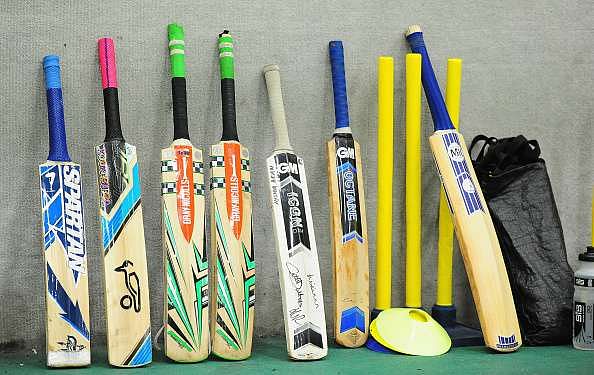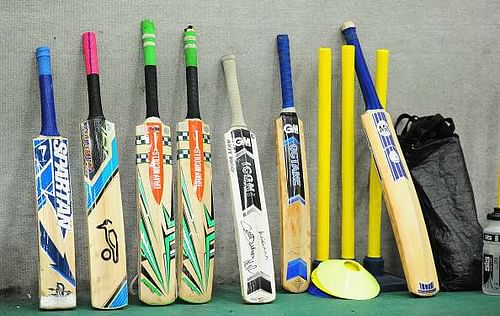
SK Glossary: Weight of a cricket bat
Does the weight of a cricket bat matter? Well, some would argue saying that it all depends on the individual calibre and that such things should not matter in the game between the bat and the ball. But if the facts are to be considered, then the weight of a cricket bat plays a major role in the performance of a batsman. However, there are a few rules to be followed while producing a cricket bat.
Rules for a cricket bat:
According to ‘the laws of cricket’, a bat should not be more than 965 mm in length and 108 mm in width. The standard weight of cricket bat weighs around 1.2 kg to 1.4 kg. These rules were introduced after the ‘Monster Bat Incident’ in 1771.
The incident involved the use of a cricket bat that was as wide as the wicket, during a match between Chertsey and Hambledon. The bat was used by Thomas White and was later objected by Hambledon. After the controversy, in 1774, it was decided that the maximum width of a bat should not exceed four and one-quarter inches. This ruling remains intact to the present day.
Weight Displacement:
Various companies have produced cricket bats over the years and have made it in accordance with the laws of the game. In the 1960s, Slazenger developed a cricket bat with no shoulders and this allowed the weight of the bat to be shifted towards the ‘sweet spot’.
The bat allowed the batsmen to have light and easy pickup and produce a lot of power with the bat. Former New Zealand allrounder Lance Cairns used this kind of a bat in the 1980s and made people sit up and take notice after he hit 6 sixes in an over.
In the 1970s, the GN 100 was released which focused on removing the wood from the centre of the rear of the bat. This made the bat lighter and also improved the sweet spot. Even the tail-enders could play strokes with this bat as it had a light pickup.
Players have even tried using a different material within the weight allowed in the law for better results. In 1979, Australian cricketer Dennis Lillee used an aluminium bat which was later opposed by players as they claimed that the aluminium damaged the cricket ball. The claims were proved wrong but the rules were then changed stating that the bat had to be only made by wood.
Mongoose bat:
The Mongoose bat created a lot of hype when it was first brought into play by the Australian cricketer Matthew Hayden during the Indian Premier League. The bat was 33% shorter than a conventional cricket bat. The aim was to reduce the unwanted part of a cricket bat and thicken the centre of the bat which was necessary for hitting the big shots with less power and it was meant to play only attacking shots.
Hayden struggled to get going with the bat early on in the tournament but later went on to score 93 runs in quick time. The other noticeable player who scored a century with the Mongoose bat was Gareth Andrew in a match between Worcestershire and Surrey in 2010.
Kashmiri Willow bats :
The production of these bats started way back in the 1920s when the British ruled over India. These bats require constant knocking for 6 hours so the edges become well shaped. They are later oiled on the front, back, toe and edges to make it more durable.
The History has only taught us that the weight and the height of a cricket bat plays a major role in the end game and innovations are only going to increase to make the game even more entertaining.
